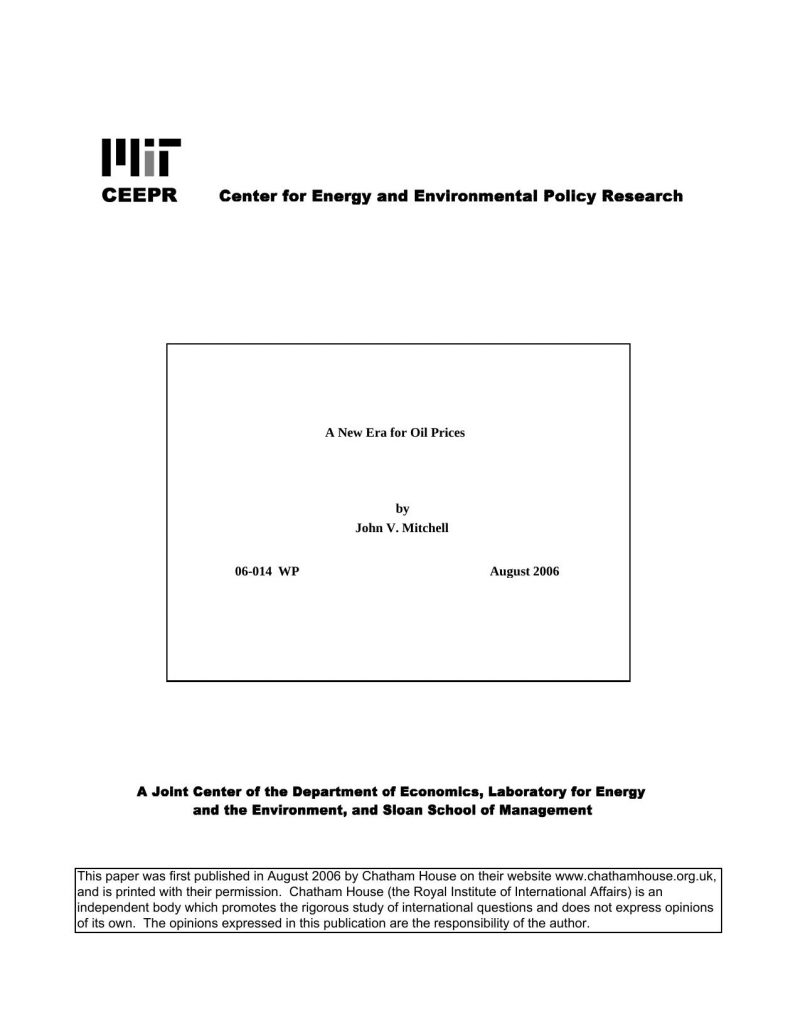A New Era for Oil Prices
John V. Mitchell
06-Aug
Since 2003 the international oil market has been moving away from the previous 20-year equilibrium in which prices fluctuated around $25/bbl (in today’s dollars). The single most important reason is that growing demand has eliminated the structural surplus of crude production capacity which had existed since the oil price shock of 1979-83.
So far, the higher oil prices since 2003, and even higher since 2005, have not induced economic recession in oil-importing countries so that oil demand has not fallen as it did in the 1980s after the second oil shock. Unless this occurs, a structural surplus will not be recreated, and prices are likely to remain ‘high’ – above $50/bbl – until longer-term reactions take effect. If the political situation in the Middle East deteriorates further prices could reach new levels, but the reaction would be quicker and stronger.
Meanwhile, supply and demand are set to expand roughly in balance over the next five years, though there are many uncertainties which will lead to short-term fluctuations. With so little controllable flexibility in supply or demand, prices will remain volatile in the short term.
Five or more years of oil and related energy prices averaging double (or more) their previous long-term average cannot fail to create a new long-term situation both in terms of economic behaviour and government policy. This will bring new competition which will simultaneously reduce the demand for energy, increase the supply of oil, and increase the substitution of other fuels for oil outside the transport sector. As these forces develop, oil prices will be unstable through the long term.
For the transport sector, there is a very large range of possibilities which do not depend on the development of new technology. Examples are a shift in US vehicle demand to vehicles with typical Japanese or European fuel efficiency (which would reduce world transport fuel demand by nearly 10%) and the opening of US and European markets to competition from Brazilian and other developing country ethanol supplies. A period of high oil prices will also lead to investment to increase the production of liquid fuels from oil sands or natural gas. Once these investments are made, they are likely to continue producing as long as their operating costs remain lower than the price of oil.



